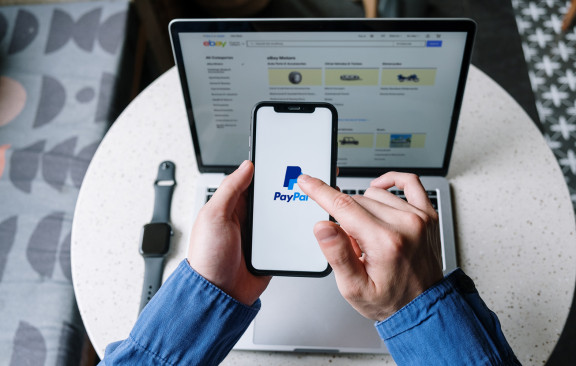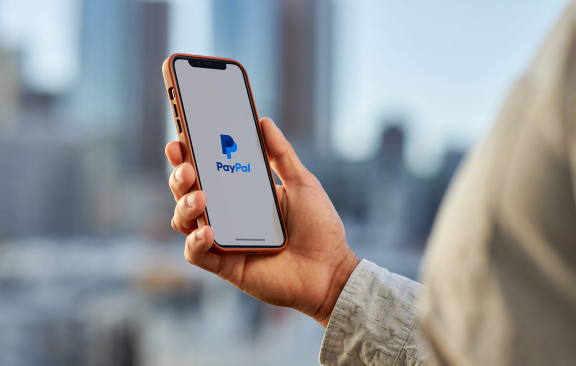There are over 179 million active PayPal accounts around the world. Of eBay’s 90 million users, almost 90% have a PayPal account. eBay even allows users to filter search results based on only displaying sellers who accept PayPal.
If you sell on eBay, accepting PayPal is critical to enjoying profits.
That very real truth doesn’t sit well with all eBay sellers, as PayPal has earned a less-than-stellar reputation among some merchants—especially when eBay and PayPal appear to favor the buyer when it comes to claims and disputes.
In reality, both companies have policies in place to protect both buyers and sellers.
When a customer issue arises with a purchase, eBay and PayPal have platforms available to facilitate resolution of the problem between the seller and customer. If a dispute cannot be resolved between the buyer and seller, it can escalate to a chargeback.
When it comes down to it, neither eBay nor PayPal make a decision regarding chargebacks—the credit card networks make that decision.
No matter how many policies PayPal and eBay put into place, sellers will experience customer disputes and chargebacks as long as they accept credit cards in any form. This means the savvy eBay seller using PayPal needs to understand what they’re up against.
In this guide, we’ll outline the following, regarding PayPal claims, disputes and chargebacks for eBay sellers:
eBay Expectations & Policies
eBay continues to be a powerful marketplace because of the policies put in-place to make the exchange between buyers and sellers as easy as possible. Specific expectations are set for appropriate buyer behavior as well as specific protection policies for eBay sellers.
Buyer Behavior Expectations
Buyers are expected to behave in a manner that adheres to eBay’s stated policy. If a buyer does not stay within the standards, eBay encourages sellers to report the concern to them.
When a buyer does indeed violate the behavioral expectations, eBay can remove their Feedback, cancel a return request, limit account privileges, limit buying activity, and even suspend their account.
eBay defines two major buckets for bad buyer behavior: 1) Abusing the buyer protection program and 2) Misusing returns.
Buyer Protection Program Abuse
The buyer protection program centers largely on the eBay Money Back Guarantee, which covers all eligible purchases on eBay.com. eBay outlines specific buyer actions that are allowed and actions that are not allowed that indicate abuse of the protection program.
An eBay buyer is allowed to open an eBay Money Back Guarantee refund request if:
- The item was not received.
- The item received does not match the listing description.
- The issue is unable to be resolved with the seller.
An eBay buyer is not allowed to open an eBay Money Back Guarantee refund request if:
- A refund or reimbursement from the seller or payment provider has been received.
- An item wasn’t paid for.
- It’s purpose is retaliation against a seller after a previous issue.
In addition, an eBay buyer is not allowed to:
- Claim that an item was not received before the estimated delivery date has passed.
- Claim that an item was not received when it did arrive.
- Claim that an item is not as described when it matches the listing description.
- Threaten to open an eBay Money Back Guarantee refund request in an effort to procure a discount or additional items when the item arrived as described.
- Display a pattern of excessively opening eBay Money Back Guarantee refund requests.
Return Abuse
As a seller, return policies must always be clearly displayed in product listings. The return policy can specify return requirements like time restraints, restocking/reshelving fees, and who is responsible for return shipping.
eBay encourages buyers to review the seller’s return policy before committing to pay for an item and before they want to initiate a return on a purchased item.
When it comes to returning items purchased on eBay, a buyer is allowed to:
- Return an item that is defective or not as described.
- Return an item in accordance with the seller’s return policy.
However, an eBay buyer is not allowed to:
- Return an item different than the one purchased.
- Return an item in a condition that differs from how the item arrived.
- Return an item that was damaged during delivery.
- Claim that an item is not as described in order to sidestep the seller’s return policy.
- Ignore the seller’s return policy.
- Repeatedly purchase and receive excessive refunds from sellers.
eBay Seller Protection Policy
Without sellers, eBay couldn’t exist. As such, eBay protects sellers with specific policies aimed at allowing them to sell with as much confidence as possible. There are a few subsets of the eBay Seller Protection Policy, but here, we’ll focus on the handling of return requests.
A seller’s return policy should be customer-centric. When a buyer has a legitimate return that is in accordance with the eBay return policy explained above, the seller should absolutely issue a refund and provide stellar customer service.
But not all return attempts represent a legitimate buyer issue. Sellers can identify these situations through a few telltale circumstances:
- A different item was returned than the one purchased.
- The buyer sends back an empty box.
- The item does not meet conditions stated in the seller’s return policy.
- The buyer reports the item as differing from it’s given product description in order to avoid shipping charges and/or restocking fees.
eBay suggests that if return abuse is suspected with a buyer, you should attempt to resolve the issue with the buyer in the “Messages” section of My eBay. If no resolution is possible, you can report the problem with the buyer to eBay.
Likewise, a buyer may request eBay to aid in their return request. In this case, eBay reviews the buyer’s request and asks the seller for information regarding the buyer and the transaction. If eBay finds the buyer guilty of abusing the eBay Money Back Guarantee or the return process, they can implement restrictions and suspensions as described previously.
PayPal Seller Protection
Sellers using PayPal to facilitate eBay transactions will field the majority of buyer issues with the payment facilitator (PayPal) and not the marketplace itself.
To address seller’s inherent eCommerce fears (i.e. security and fraud), PayPal created it’s free Seller Protection program to cover two particular types of buyer complaints: Unauthorized Transactions and Item Not Received.
Unauthorized Transactions are transactions that are processed, but the cardholder claims they did not authorize or participate in the transaction.
Item Not Received disputes occur when a buyer purchases an item, but claims it was never received.
If the transaction at hand meets PayPal’s requirements, they’ll help keep your merchant PayPal balance unaffected.
Seller Protection Requirements
Naturally, there are several stipulations for a seller to be covered by PayPal’s Seller Protection program.
On the most basic level, the protection policy covers only physical goods sold and shipped with proof of delivery from within the U.S. to global buyers. (The seller’s permanent address listed in their PayPal account must be in the United States.)
Furthermore, the item must be shipped to the address on the Transaction Details page or to a confirmed address. For sellers to ensure they’re enjoying this coverage, they need to respond to any documentation requests from PayPal within 10 business days at the most.
If the dispute represents an Item Not Received or an Unauthorized Payment issue, there are specific requirements for Seller Protection to apply.
Item Not Received disputes must have the payment marked as either “eligible” or “partially eligible” on the Transaction Details page and the seller must provide online tracking in order to qualify for Seller Protection.
In Unauthorized Payment disputes, the payment must be marked as “eligible” on the Transaction Details page and the seller must provide proof of delivery or proof of shipment.
If the transaction is Seller Protection Eligible and the seller follows the requirements, Paypal sellers are able to keep the transaction value regardless of the outcome of the chargeback.
PayPal will absorb the losses associated with lost Item Not Received and Unauthorized Payment chargebacks.
Where Seller Protection Doesn’t Apply
Beyond outlining what disputes can be covered by Seller Protection, PayPal also details the circumstances where the protection does not apply. The full eligibility requirements are listed in the User Agreement, but the key points regarding what is not covered include:
- Not as Described disputes, claims, or chargebacks.
- Digital goods.
- Items picked up in-person.
- Claims filed through an eBay account.
- Prohibited items and counterfeit goods.
- PayPal Direct, Virtual Terminal, PayPal Business, or PayPal Here transactions.
3 Types of Cases in PayPal
PayPal classifies customer disputes into three different cases: disputes, claims, and chargebacks.
All of these are displayed and summarized in a seller’s Resolution Portal in the Resolution Center where disputes, claims, and chargebacks are managed in PayPal.

Disputes
Disputes represent the lowest tier of buyer issues.
In these situations, a buyer opens a case to discuss their problems associated with the transaction. Sellers and buyers communicate directly within the Resolution Center.
The seller is able to message the buyer, send offers, accept the buyer’s request, or escalate the dispute to PayPal. If a dispute is escalated to PayPal, it becomes a claim.
Claims
When a dispute is escalated to a claim, it’s no longer between the buyer and seller alone to come to a solution. Instead, PayPal becomes the mediator.
The claim information page varies greatly from a dispute page, as it’s no longer simply a conversation between buyer and seller. The claim page outlines the:
- Transaction ID
- Invoice ID
- Buyer name
- Buyer email
- Transaction date
- Reason for claim
- Date of complaint
- Status
- Status details
Sellers can use the status details to see more information related to the claim, how to resolve it, and how long they have to respond.
Sellers have three options to respond to claims:
- Provide proof of shipment.
- Refund the customer.
- Provide evidence that the customer has already been refunded.
Chargebacks
Where claims are an escalation to disputes where PayPal becomes the mediator, chargebacks are an escalation of claims where the card network becomes the party handing down the chargeback verdict.
As with most payment service providers, PayPal charges a fee for each chargeback filed against sellers (typically $20).
As with claims, the transaction ID, invoice ID, buyer name and email, transaction amount and date, and reason for dispute are all listed.
The biggest difference is that a chargeback reason code is provided, which describes the specific case in more detail.
In addition, a chargeback amount is not displayed to the seller. The chargeback amount is the value refunded to the customer by their issuing bank, which the seller is responsible for crediting to the issuing bank, should the buyer win the chargeback.
How To Manage All Types of Cases in PayPal
Disputes, claims, and chargebacks all require attention and management from sellers. The video below walks sellers through responding to disputes, claims, and chargebacks in the PayPal Resolution Center.
While preventing customer issues in PayPal is essential, they will still occur no matter how many precautions an eBay seller takes. This means it’s absolutely critical for eBay sellers to stay on top of customer issues to be a profitable online store.










They say it is technical difficulties and It should be available soon.
How is that possible.
They can't tell me when and can't see any problems expect the computer software must be playing up?
Not fair rite before Xmas thanks PP
Thanks for sharing. That's sucks definitely! You should follow-up with them constantly. A company as big as PayPal should be able to address software glitches within a matter of hours or at most a few days. Hope you got your money released by now. Cheers!
I don’t owe eBay anything right now and all payments go through PayPal so I’m stuck.
I see eBay is allowing people to use their checking account and I’m wondering if I did that and just made payments to PayPal until it’s paid if in the meantime can eBay take all the money out of my account to pay PayPal off in full without my permission or anything else of that nature? I’m going to pay PayPal or it’ll affect my credit like any other bill.
So my question is: if I change my payment method, can and/or will eBay just take it from my account or 1st sale and give it to PayPal? I’m not trying to cheat PayPal and I need my credit card, but I wonder if they can just take it and pay PayPal. I just need to know what to expect. Thanks for reading and I’m subscribed now. This is nice. Great work!